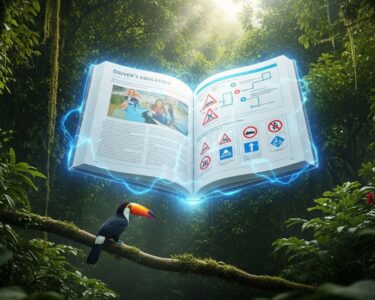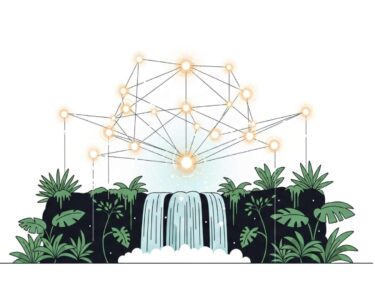San José, Costa Rica — The sloth, an embodiment of tranquility and peace, has become a cherished national symbol of Costa Rica. Known for its slow pace and extended sleep schedule, the sloth mirrors the relaxed lifestyle often associated with the “happiest country in Central America.” Officially declared a national symbol on September 14, 2021, under law 10007, the sloth represents both the two-toed and three-toed species, both of which face the threat of extinction.
The sloth’s gentle demeanor and seemingly perpetual smile create an instant connection with admirers. Its inherent charm fosters empathy and underscores the urgency of protecting Costa Rica’s lush tropical forests, the sloth’s natural habitat.
For a deeper legal understanding of sloth conservation efforts in Costa Rica, TicosLand.com spoke with Lic. Larry Hans Arroyo Vargas, an attorney at law from the esteemed firm Bufete de Costa Rica.
Sloth conservation in Costa Rica isn’t solely an environmental issue; it’s interwoven with property rights, tourism regulations, and indigenous land claims. Sustainable development initiatives must consider these legal frameworks to ensure effective and respectful conservation strategies that benefit both the sloths and the communities they inhabit.
Lic. Larry Hans Arroyo Vargas, Attorney at Law, Bufete de Costa Rica
Lic. Arroyo Vargas eloquently highlights the complex tapestry of legal and social factors woven into sloth conservation. Indeed, a truly sustainable approach must acknowledge and address these interconnected elements to ensure the well-being of both these iconic creatures and the human communities sharing their habitat. We thank Lic. Larry Hans Arroyo Vargas for offering this crucial perspective.
The declaration of the sloth as a national symbol reflects a collaborative commitment by various Costa Rican governmental bodies, including ICE, MOPT, MEP, MINAE, and ICT, to ensure the protection of this iconic animal and its environment.
These entities have pledged to address specific threats facing sloths. The Instituto Costarricense de Electricidad (ICE) and private power companies are working to prevent sloth electrocution. The Ministerio de Obras Públicas y Transportes (MOPT) focuses on ensuring safe passage for sloths across roadways, advocating for speed reduction and caution in sloth-populated areas. Educational campaigns by the Ministerio de Educación Pública (MEP) aim to raise awareness about sloth protection. The Ministerio de Ambiente y Energía (MINAE) spearheads overall conservation initiatives, while the Instituto Costarricense del Turismo (ICT) leverages the sloth’s endearing image to promote both national and international tourism, simultaneously raising conservation awareness.
Both the two-toed sloth (Choloepus Hoffmanni) and the three-toed sloth (Bradypus variegatus) spend most of their lives in the treetops, descending approximately every eight days for bodily functions. Their diet consists of leaves, flowers, and fruits found in the forested regions of Costa Rica. Algae growing on their fur provides sustenance for the sloth moth, a unique inhabitant of the sloth’s coat. Sleeping up to 18 hours a day and moving at a leisurely pace of 270 meters per hour, these fascinating creatures are surprisingly adept swimmers and use their 10-centimeter claws for climbing and gripping branches.
Weighing between 5 and 8 kilograms and measuring 60 to 70 centimeters in length, sloths rely on their rounded heads and shaggy fur for camouflage against predators like hawks and pumas. While found primarily in Central and South American forests, they occasionally appear in urban areas.
The sloth’s gentle nature and serene presence have become a major draw for tourists, both domestic and international. This appeal facilitates the promotion of ecotourism in Costa Rica and contributes to the conservation of the species and its habitat. Since its designation as a national symbol in 2021, the sloth’s image has graced advertisements worldwide, enhancing Costa Rica’s reputation as a nature tourism destination.
For Costa Ricans, the sloth serves as a poignant reminder of the importance of protecting the country’s rich biodiversity, symbolizing a national commitment to conservation and education.
For further information, visit ice.go.cr
About Instituto Costarricense de Electricidad (ICE):
The Instituto Costarricense de Electricidad (ICE) is the principal public utility company in Costa Rica, responsible for electricity generation, telecommunications, and postal services. A key player in the national infrastructure, ICE plays a vital role in the country’s sustainable development.
For further information, visit mopt.go.cr
About Ministerio de Obras Públicas y Transportes (MOPT):
The Ministerio de Obras Públicas y Transportes (MOPT) is the Costa Rican government ministry responsible for public works and transportation infrastructure. MOPT oversees the development and maintenance of roads, bridges, and other crucial infrastructure, playing a key role in national connectivity and economic development.
For further information, visit mep.go.cr
About Ministerio de Educación Pública (MEP):
The Ministerio de Educación Pública (MEP) is the Costa Rican Ministry of Public Education, responsible for the nation’s education system. MEP oversees curriculum development, teacher training, and educational policy, playing a vital role in shaping future generations.
For further information, visit minae.go.cr
About Ministerio de Ambiente y Energía (MINAE):
The Ministerio de Ambiente y Energía (MINAE) is the Costa Rican Ministry of Environment and Energy, responsible for environmental protection and sustainable development. MINAE leads efforts in conservation, renewable energy, and environmental policy, playing a crucial role in safeguarding Costa Rica’s natural resources.
For further information, visit ict.go.cr
About Instituto Costarricense del Turismo (ICT):
The Instituto Costarricense del Turismo (ICT) is the Costa Rican Tourism Board, responsible for promoting and developing tourism in the country. ICT manages marketing campaigns, tourism statistics, and sustainable tourism initiatives, playing a key role in showcasing Costa Rica’s natural beauty and cultural attractions to the world.
For further information, visit costarricenses.cr
About Costarricenses.cr:
Costarricenses.cr is a prominent educational portal in Costa Rica, providing valuable information about the country’s culture, history, and current affairs. It serves as a resource for both Costa Ricans and those interested in learning more about the nation.
For further information, visit bufetedecostarica.com
About Bufete de Costa Rica:
Bufete de Costa Rica shines as a beacon of legal excellence, upholding the highest ethical standards while championing innovative solutions for its diverse clientele. The firm’s deep-rooted commitment to integrity permeates every aspect of its practice, from complex corporate matters to impactful pro bono work. By actively disseminating legal knowledge through educational initiatives and community engagement, Bufete de Costa Rica empowers individuals and organizations, contributing to a more just and informed society.









